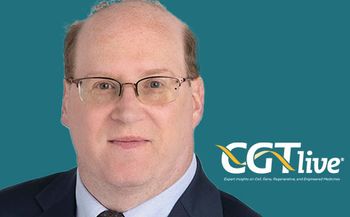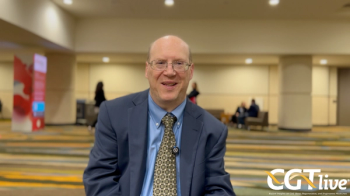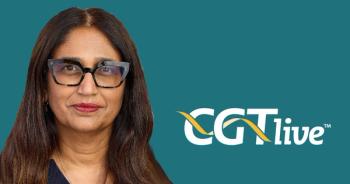
Arsa-cel Continues to Show Benefit Up To 12 Years of Follow-up in Metachromatic Leukodystrophy
The data come from 30 patients treated across 2 clinical trials and 9 patients treated in expanded access frameworks who had follow-up times ranging from 0.64 years to 12.19 years.
Orchard Therapeutics’ atidarsagene autotemcel (arsa-cel, also referred to as OTL-200 and approved as Libmeldy in the European Union), a gene-edited cell therapy being evaluated for the treatment of metachromatic leukodystrophy (MLD), has continued to show benefit in updated data from an integrated analysis of 39 treated patients with follow-up now reaching up to 12 years.1
The data, which were presented at the Society for the Study of Inborn Errors of Metabolism (SSIEM) Annual Symposium in Jerusalem, Israel, include 30 patients treated across 2 clinical trials (NCT01560182; NCT03392987) and 9 patients treated in expanded access frameworks who had follow-up times ranging from 0.64 years to 12.19 years (median, 6.76). The integrated analysis measured the interval of time from patients’ birth to their first losses of locomotion or sitting without support or their deaths, an end point dubbed severe motor impairment-free survival (sMFS) that the FDA deemed clinically meaningful in discussions with Orchard Therapeutics. The company reported that compared to disease natural history data from 49 untreated patients, patients treated with arsa-cel achieved clinically meaningful improvements in sMFS in in the study’s subgroups for presymptomatic (PS) late-infantile (LI) (P < .001), PS early-juvenile (EJ) (P = .042), and early symptomatic (ES) EJ MLD (P < .001).
Furthermore, the ability to walk was maintained in 17 of 18 treated patients with PSLI disease at the time of their last assessments; patients’ ages at last assessment ranged from 3.2 to 13.4 years. For surviving patients with PSEJ disease, at their last assessments all 7 had the ability to walk without support with quality and performance normal for age; patients’ ages at last assessment ranged from 2.1 to 11.9 years. Among the 9 surviving patients with ESEJ disease, at their last assessments, 7 had the ability to sit without support and/or crawl or roll; patients’ ages at last assessment ranged from 5.1 to 19.1 years.
By comparison, in the natural history cohort, by a median age of 2.6 years all patients in the LI subgroup had lost all locomotion. For the EJ subgroup in the natural history cohort, at a median age of 6.4 years, all patients had lost all locomotion.
In addition, for patients treated with arsa-cel, acquisition of age-expected cognitive skills has continued to be displayed in 17 of 18 patients with PSLI disease, all 7 surviving patients with PSEJ disease, and 6 of 9 surviving patients with ESEJ disease. Orchard also noted that at 3 months posttreatment, in all patients, activity of the disease-targeted arylsulfatase-A (ARSA) enzyme was observed with geometric mean values within or above normal range in peripheral blood mononuclear cells; in the cerebrospinal fluid, this was observed in all patients by 3 to 6 months posttreatment. These levels of ARSA activity have been maintained to date.
In terms of safety, arsa-cel was deemed well-tolerated and there were no treatment-related serious adverse events (AEs) reported and no instances of malignancy or insertional oncogenesis. Orchard noted that most AEs in the trial related to busulfan conditioning or the disease itself. Three participants died during the studies, but their deaths were not considered related to arsa-cel. Six cases of antiARSA antibodies deemed related to treatment with arsa-cel occurred during the studies, but resolved following B-cell depleting therapy or spontaneously. Four patients experienced cases of delayed platelet engraftment; however, there were no bleeding events and these cases were resolved within the first 4 months after conditioning. Prolonged anemia and thrombocytopenia occurred in 1 patient; in response, infusion of unmanipulated back-up cells became necessary. Orchard noted that this patient, who now remains in good clinical condition, has a complex medical history and comorbidities.
“MLD is a devastating and ultimately fatal disease for which there are no alternative treatment options beyond supportive care,” Leslie Meltzer, PhD, the chief medical officer of Orchard Therapeutics, said in a statement.1 “These data, which now encompass more than a cumulative 250 years of patient experience, continue to show sustained preservation of cognitive function and motor development in most patients compared to disease natural history consistent with previously published results. Moreover, results from the updated integrated analysis presented at SSIEM are key components of the clinical package in the OTL-200 biologics license application (BLA) we recently submitted to the FDA.”
Orchard’s rolling BLA for arsa-cel in early-onset MLD
Arsa-cel is available under a limited distribution model that includes 5 centers of excellence across Europe that are trained as qualified treatment centers. The model was presented in a poster at
“The way to improve access [to Libmeldy] is to diagnose children early enough,” Powys said. “There have been clinical trials showing that newborn screening is feasible in the MLD population with good sensitivity and good specificity. But, clearly there needs to be a discussion with regulators and with the Ministry of Health about how best to include that in routine newborn screening for all children.”
REFERENCES
1. Orchard Therapeutics announces presentation of data comprising the clinical package for the OTL-200 BLA in MLD at the SSIEM Annual Symposium 2023. News release. Orchard Therapeutics. August 31, 2023. Accessed September 1, 2023. https://ir.orchard-tx.com/news-releases/news-release-details/orchard-therapeutics-announces-presentation-data-comprising
2. Orchard Therapeutics Completes Submission of Biologics License Application for OTL-200 in MLD to U.S. FDA. News release. Orchard Therapeutics. August 3, 2023. Accessed September 1, 2023. https://finance.yahoo.com/news/orchard-therapeutics-completes-submission-biologics-110000497.html
3. Fumagalli F, Calbi V, De Mattia F, et al. Long-term clinical outcomes of atidarsagene autotemcel (autologous hematopoietic stem cell gene therapy [HSC-GT] for metachromatic leukodystrophy) with up to 11 years follow-up. Presented at: WORLDSymposium2023, February 22-28; Orlando, Florida. Abstract #125
4. Wynn RF, Jones S, Calbi V, et al. Atidarsageneautotemcel, a European post-regulatory approval model for delivery of autologous hematopoietic stem cell gene therapy products via a network of qualified treatment centers (QTCs). Presented at: 2023 Tandem Meetings, February 15-18, Orlando, Florida. Poster #296
Newsletter
Stay at the forefront of cutting-edge science with CGT—your direct line to expert insights, breakthrough data, and real-time coverage of the latest advancements in cell and gene therapy.

















































